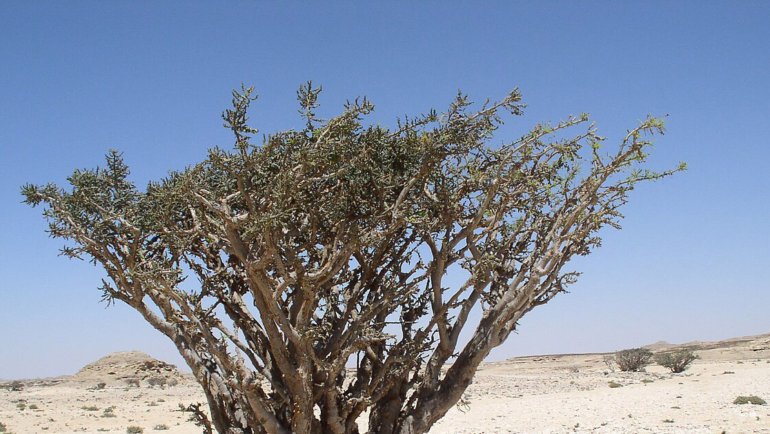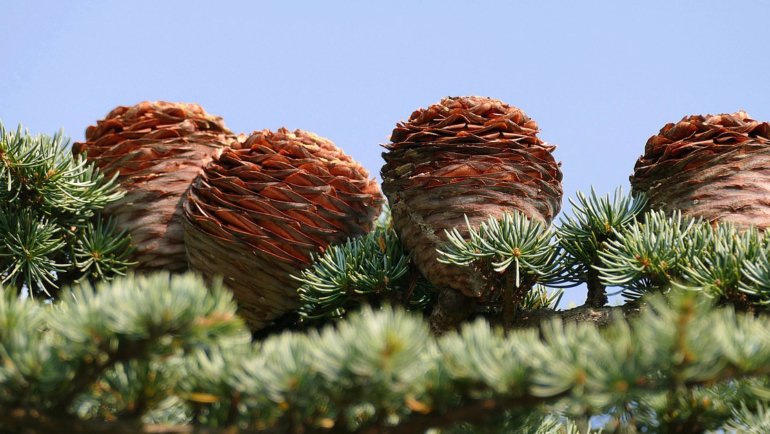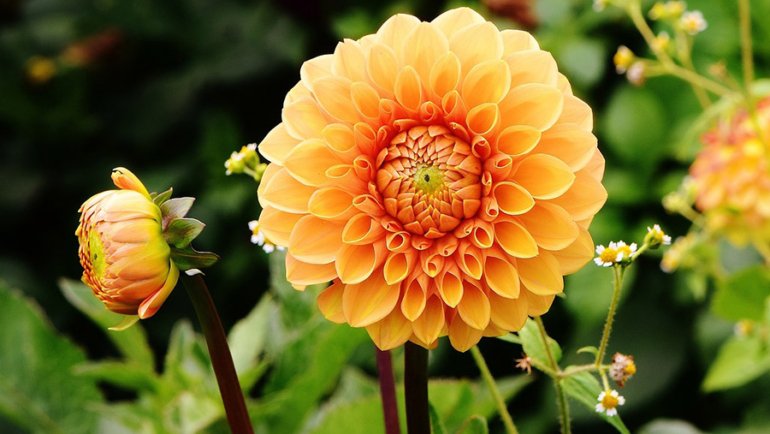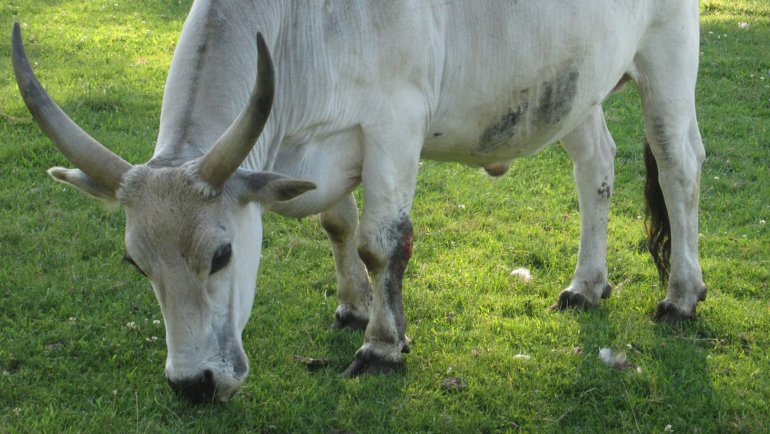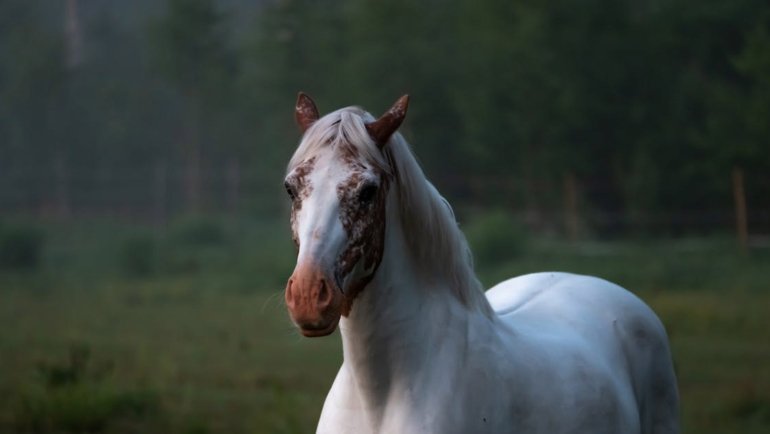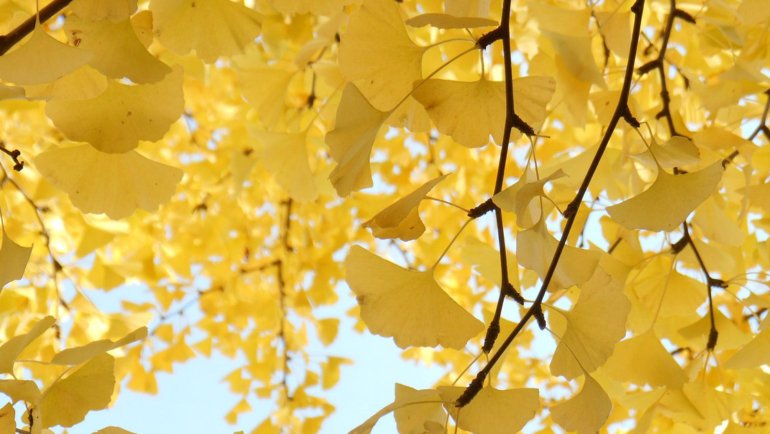Jamaica, a vibrant island nation in the Caribbean, is renowned for its rich cultural heritage, breathtaking landscapes, and diverse flora and fauna. Among its natural treasures stands the Lignum Vitae (Guaiacum officinale), proudly designated as the national flower. This remarkable plant, often referred to as the “Wood of Life,” captivates with its beauty and symbolizes the enduring spirit of the Jamaican people.
Description of the Flower
The Lignum Vitae is a slow-growing, evergreen tree that typically reaches heights of 10 to 30 feet. Its dense, rounded canopy is adorned with small, leathery, dark green leaves, each about 2 inches long. The tree produces an abundance of star-shaped, bluish-purple flowers, approximately 1 inch in diameter, which bloom year-round with a peak in spring. These vibrant blossoms emit a subtle fragrance that attracts butterflies, bees, and other pollinators, playing a crucial role in the local ecosystem.
Following the flowering period, the Lignum Vitae bears distinctive orange-yellow fruits, each containing red flesh and black seeds. The combination of its vivid flowers and colorful fruits enhances the tree’s ornamental appeal, making it a cherished feature in Jamaican landscapes.
Notably, the Lignum Vitae is renowned for its exceptionally hard and dense wood, which has historically been utilized in various applications, from crafting durable tools to serving medicinal purposes. Its resilience and multifaceted utility contribute to its esteemed status as a national symbol.
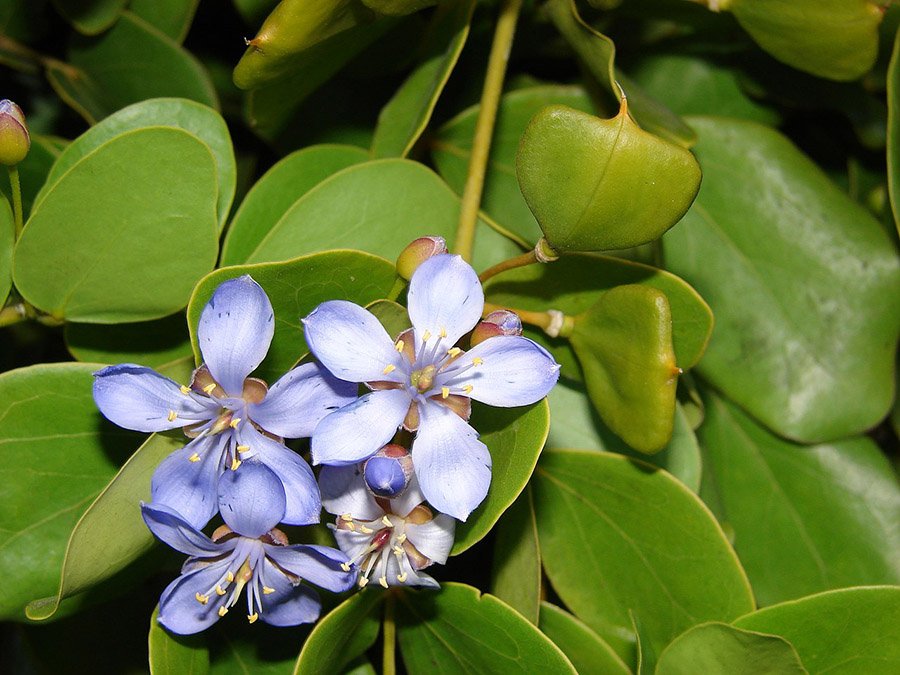 Source: Wikimedia Commons
Source: Wikimedia CommonsWhere Does Lignum Vitae Grow?
Lignum Vitae (Guaiacum officinale and Guaiacum sanctum) thrives in the warm, coastal regions of the Caribbean, including Jamaica, as well as parts of Central and South America.
These slow-growing evergreens favor well-drained soils and are often found in dry coastal forests and woodlands. Their natural habitat includes areas with full sun to partial shade, and they exhibit a remarkable tolerance for salt spray and wind, making them well-suited to seaside environments.
The Flower in the Ecosystem
Lignum Vitae plays a vital role in its ecosystem, offering both sustenance and habitat to various species. Its vibrant blue flowers are highly attractive to pollinators, including bees and butterflies, facilitating cross-pollination and contributing to the health of the local flora. Notably, it serves as a larval host plant for the lyside sulphur butterfly (Kricogonia lyside), supporting its life cycle.
The tree’s fruits are consumed by birds such as catbirds and mockingbirds, aiding in seed dispersal. Additionally, the dense canopy provides shelter and nesting sites for various wildlife, enhancing biodiversity within its native range.
Why and When Did Lignum Vitae Become the National Flower of Jamaica
The Lignum Vitae (Guaiacum officinale), translating to “Wood of Life,” holds profound significance in Jamaican culture. Its name reflects its renowned medicinal properties, historically utilized for treating various ailments.
The tree’s resilience and versatility symbolize the enduring strength and resourcefulness of the Jamaican people. In 1962, coinciding with Jamaica’s independence, the Lignum Vitae was officially designated as the national flower, embodying the nation’s identity and cultural heritage.
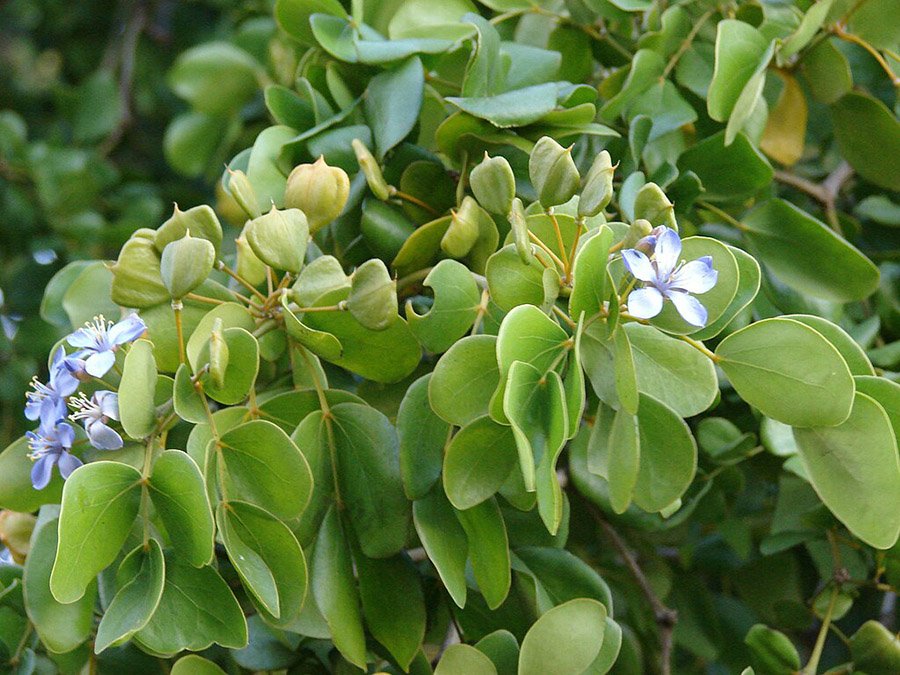 Source: Wikimedia Commons
Source: Wikimedia CommonsWhere is the Lignum Vitae Featured in Jamaica?
While the Lignum Vitae is not depicted on Jamaica’s national flag or currency, its influence permeates various aspects of Jamaican culture. The tree’s durable wood has been traditionally used in crafting furniture, tool handles, and even police batons, showcasing its practical significance.
Additionally, the Lignum Vitae’s blossoms and foliage are often incorporated into local art and crafts, reflecting its status as a national emblem. During national celebrations and cultural festivals, the flower is sometimes featured in decorations, symbolizing national pride and the rich natural heritage of Jamaica.
Names of Lignum Vitae
The Lignum Vitae (Guaiacum officinale and Guaiacum sanctum) is known by several names across different regions:
- Guaiacum: Reflecting its scientific genus.
- Guayacán: Commonly used in Spanish-speaking countries.
- Palo Santo: Meaning “holy wood” in Spanish, though this name is also associated with other species.
- Ironwood: A term used for various hard, dense woods, including Lignum Vitae.
- Pockholz: A name used in parts of Europe.
In Jamaica, it is predominantly referred to as Lignum Vitae, aligning with its Latin origin meaning “wood of life.”
Interesting Facts
- Medicinal Uses: Historically, the resin from Lignum Vitae was used to treat ailments such as arthritis and coughs, earning it the name “wood of life.”
- Densest Wood: Lignum Vitae is among the densest woods globally, so heavy that it sinks in water.
- Historical Applications: Its hard and self-lubricating properties made it ideal for shipbuilding, particularly for crafting propeller shaft bearings in naval vessels.
- Cultural References: The wood has been mentioned in literature, such as in Charles Dickens’ “Bleak House,” where a character is nicknamed Lignum Vitae to denote his toughness.
- Conservation Status: Due to overexploitation, Lignum Vitae species are now listed in Appendix II of CITES, indicating they are potentially endangered.
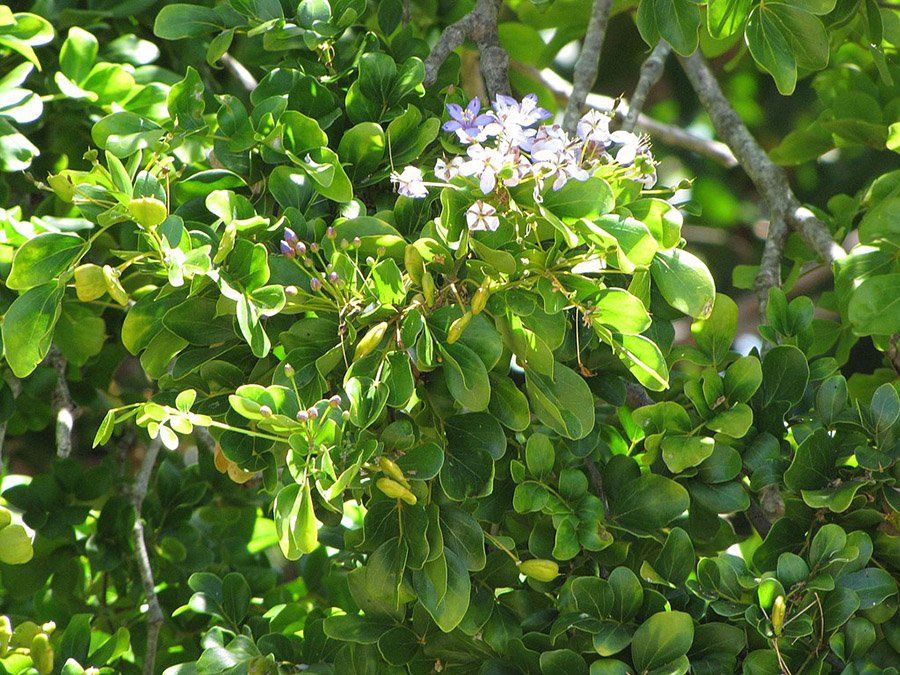 Source: Wikimedia Commons
Source: Wikimedia CommonsHow to Grow Lignum Vitae
Cultivating Lignum Vitae requires attention to its specific needs:
- Climate: Thrives in tropical to subtropical climates with temperatures ranging between 20-30°C.
- Sunlight: Prefers full sun exposure but can tolerate partial shade. In regions with intense sun, some afternoon shade can prevent leaf scorch.
- Soil: Requires well-drained soils and can tolerate a variety of soil types, including sandy and limestone-based soils.
- Watering: Once established, it is drought-tolerant. Water moderately, allowing the soil to dry out between watering sessions.
- Growth Rate: Extremely slow-growing; patience is essential.
- Pruning: Prune in late winter or early spring to maintain shape and remove any dead or damaged branches.
- Pest and Disease Resistance: Generally resistant to pests and diseases, making it a low-maintenance choice for suitable climates.
Due to its slow growth and overharvesting in the wild, cultivating Lignum Vitae contributes to its conservation and offers a unique addition to gardens in appropriate climates.
Other Beautiful Flowers Native to Jamaica
Jamaica’s rich biodiversity includes a variety of stunning native flowers that contribute to the island’s vibrant landscapes and cultural heritage. Here are five notable examples:
- Hibiscus (Hibiscus sabdariffa): Commonly known as sorrel in Jamaica, this plant produces bright red flowers and is traditionally used to make a popular festive beverage during Christmas.
- Blue Mahoe (Hibiscus elatus): As Jamaica’s national tree, the Blue Mahoe bears attractive hibiscus-like flowers that change color from yellow to orange-red as they mature.
- Jamaica Orchid (Broughtonia sanguinea): This endemic orchid species showcases vibrant red to purple flowers and is highly prized for its beauty.
- Portlandia (Portlandia coccinea): Also known as the bell flower, this plant features striking red, trumpet-shaped flowers and is native to Jamaica’s limestone forests.
- Flame of the Woods (Ixora coccinea): This flowering shrub displays clusters of bright red flowers and is commonly found in Jamaican gardens and landscapes.
Frequently Asked Questions
What is the national flower of Jamaica?
The national flower of Jamaica is the Lignum Vitae (Guaiacum officinale), known for its beautiful blue flowers and exceptionally hard wood.
Why was the Lignum Vitae chosen as Jamaica’s national flower?
The Lignum Vitae, meaning “wood of life,” was chosen for its medicinal properties, durability, and significance in Jamaican history and culture.
What are Jamaica’s other national symbols?
Jamaica’s national symbols include the Doctor Bird (national bird), Ackee (national fruit), Blue Mahoe (national tree), and the national motto “Out of Many, One People.”
Where can I see the Lignum Vitae in Jamaica?
The Lignum Vitae grows best in the dry woodlands along the north and south coasts of Jamaica.
Is the Lignum Vitae used for anything besides its flowers?
Yes, the Lignum Vitae’s wood is extremely hard and has been used historically for making tools, furniture, and in shipbuilding.
